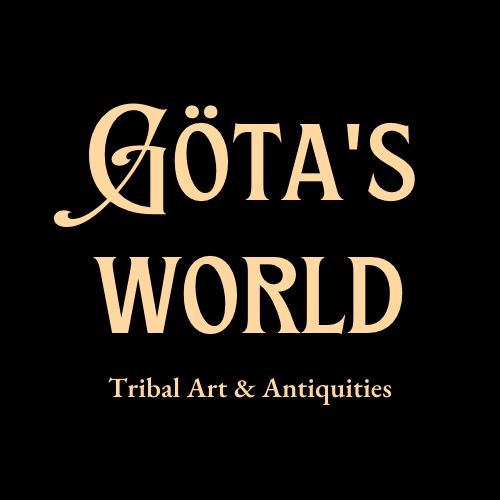Ibibio Bronze Currency Manilla Okpoho
Ibibio Bronze Currency Manilla Okpoho
Couldn't load pickup availability
Early 19th century, Ibibio people, Nigeria.
Gorgeous, small-sized late period bronze manilla currency with a traditional horseshoe shape and flattened broad terminals, was known as the "Mkporo" or "Okpoko/Okpoho" manilla and was produced in Birmingham, England in the early 19th century. The word "Okpoko" is the Calabar, Efik, Annang, and Ibibio term for money or brass. Many Okpoho manillas were salvaged from the wreck of the slave ship Douro off the Isles of Scilly in 1843.
The Ibibio people are a coastal people in southern Nigeria. They are mostly found in Akwa Ibom, Cross River, and on the Eastern Part of Abia. They are related to the Annang Igbo and Efik peoples. Manillas are a form of commodity money, usually made of bronze or copper, which were used in West Africa. They were produced in large numbers in a wide range of designs, sizes, and weights. Originating before the colonial period, perhaps as the result of trade with the Portuguese Empire, Manillas continued to serve as money and decorative objects until the late 1940's and are still sometimes used as decoration. In popular culture, they are particularly associated with the Atlantic slave trade. The name manilla is said to derive from the Spanish for a "bracelet" manilla, the Portuguese for "hand-ring" (manilha), or after the Latin manus (hand) or from "monilia", plural of necklace (monile). They are usually horseshoe-shaped, with terminations that face each other and are roughly lozenge-shaped. The earliest use of manillas was in West Africa. As a means of exchange they originated in Calabar. Calabar was the chief city of the ancient southeast Nigerian coastal kingdom of that name. It was here in 1505 that a slave could be bought for 8-10 manillas, and an elephant’s tooth for one copper manilla. Africans of each region had names for each variety of manilla, probably varying locally. They valued them differently, and were very particular about the types they would accept.
Good condition. Heavy wear consistent with age and use. Beautiful deep dark patina. Size approx. 5,9cm x 5,9cm x 1,8cm.
Provenance: Private collection from Denmark.
For a similar examples see:
Manilla, National Museum of American History, Smithsonian, Accession Number: 1979.1263 (https://americanhistory.si.edu/collections/nmah_1067116)
Manilla: Currency, The British Museum, Accession Number: Af1905,0413.39 (https://www.britishmuseum.org/collection/object/E_Af1905-0413-39)
References and further reading:
The Teach Yourself Guide to Numismatics, C.C. Chamberlain, English Universities Press. 1963, p. 92.
The West African Manilla Currency: Research and Securing of Evidence from 1439-2019, Rolf Denk, Tredition GmbH, Hamburg, 2020.
Primitive Money in its ethnological, historical and economic aspects, Paul Einzig, Eyre & Spottiswoode, London, 1949.
Object biographies, Manilla or Penannular Bracelet Currency, Eric Edwards, Balfour Library, Pitt Rivers Museum, January 29th, 2010. (https://web.prm.ox.ac.uk/rpr/index.php/objectbiographies/78-manilla.html)


-
Shipping
The shipment will be prepared in the course of 3-5 days and dispatched via Posti Group Oyj or purchased item(s) can be picked up from our shop during the store's opening hours (Tarkk’ampujankatu 4, 00140, Helsinki, Finland). Within the Finland, all items are shipped via Posti Group Oyj unless otherwise requested. We pack the items carefully and mainly in recycled materials because we want to save nature. You will receive the tracking number for your items by e-mail.
-
Returns
Returns and exchange will be accepted within fourteen days (14) of receipt at the purchaser’s cost to include freight and packaging. Items must be returned in the same condition as when they were shipped, and will not be accepted if damaged or altered in any way. Please inform us via email (info@gotanmaailma.fi) or by calling +358408408352 before sending. We do not accept returns more than 14 days after delivery.


